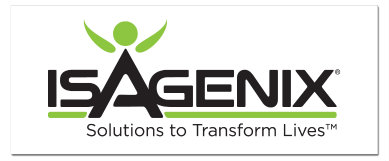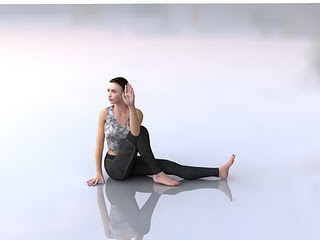Therapeutic Touch
Therapeutic touch is a healing technique in which a practitioner's hands are passed in wavelike motions inches above a person's body. (Despite the name, the practitioner typically does not make contact with the body, although some practitioners do include physical touch.) It is believed that by doing therapeutic touch, the practitioner can break up a person's energy blockages and thus improve health and well-being.
Therapeutic touch weaves together elements from a variety of healing traditions, among them Ayurveda, traditional Chinese medicine, and the ancient religious practice of laying on of hands. It was developed in the early 1970s by Dolores Krieger, Ph.D., R.N., a professor emeritus of nursing at New York University, and Dora Kunz, a healer and author of several books on human energy fields and therapeutic touch.
The idea of a human energy field, or life force, isn't new. It is included in Ayurvedic medicine as prana, and the Chinese known it as qi. Therapeutic touch is controversial in the West, however, where the notion of an energy field is not generally accepted.
How Does Therapeutic Touch Work?
Those who have had success with therapeutic touch believe that the treatments work through manipulation of the energy that pulsates in and around all living beings–similar to what Western physicists call a force field. It is thought that therapeutic touch improves health by clearing blockages in that energy field and by helping a person build up his own curative energy.
Another explanation is that therapeutic touch relaxes the body, allowing it to function and heal itself better than when it is tense. Studies have shown that wounds heal faster, pain levels are lower, and immune function is stronger when stress levels are decreased.
Health Benefits of Therapeutic Touch?
Therapeutic touch advocates believe that this therapy can reduce stress, promote relaxation, relieve pain, and stimulate healing. It is usually used as adjunct therapy to conventional medical treatment.
Studies have shown that the technique helps reduce anxiety in patients awaiting or recovering from surgery. At Columbia-Presbyterian Medical Center in New York City, patients may request therapeutic touch during or after an operation. A survey of 10 patients who were initially "extremely skeptical" of the technique found it to be "remarkably helpful."
A 1998 study, published in the Journal of Family Practice, showed that therapeutic touch significantly reduced pain and increased function in patients with osteoarthritis of the knee. Another 1998 study in the Journal of Advanced Nursing showed that therapeutic touch reduced pain and anxiety in burn victims.
More controversial is a study published in the Journal of the American Medical Association in 1998, which tested whether therapeutic touch practitioners could actually detect the human energy field. In the study, which was conceived, designed, and carried out by a 9-year-old student, researchers had 21 practitioners place their hands through a screen so that the practitioners couldn't see them. A researcher then held one of her hands over one of the practitioner's hands and asked the practitioner to tell which hand she was near, by feeling for the energy field of the hand. The practitioners chose the correct hand only 44% of the time, a result similar to that expected from random chance. Critics of therapeutic touch believe that this study shows the therapy's lack of validity. Some therapeutic touch advocates even question the worth of the study, believing that it was badly designed.
What Can I Expect From Therapeutic Touch?
Therapeutic touch sessions generally last 20 to 30 minutes. They can be conducted in a practitioner's office, or in a hospital, nursing home, or other medical center as required. The patient can be fully clothed, and may be standing, sitting, or lying down.
A session will usually begin with a conversation between the patient and the practitioner about the patient's health problems. The practitioner will then go into a meditative state to prepare for the session.
To begin, the practitioner assesses the patient's energy field, scanning for energy blocks by moving her hands in slow, rhythmic motions over the body but not touching it. Once a blockage is found, the practitioner moves her hands in a flowing manner from the top of the blockage location down and away from the body, "unruffling" the energy field where it is blocked. This action is repeated until the blockage is no longer felt by the practitioner or the patient feels relief.
After this, the practitioner transfers energy from herself to the patient to help facilitate healing. She will then evaluate the energy field once again to check for remaining blockages, and end the session by ensuring that the person is feeling well. The patient should probably feel relaxed and calm after the treatment.
The number and frequency of treatments depends on the patient and the illness. A muscle spasm may only require one treatment, while a chronic condition such as migraine headaches may need multiple sessions.
Cautions about Therapeutic Touch
- There is a slight chance of nausea and dizziness occurring after a therapeutic touch treatment.
- Some believe that a person in a weakened state may become irritable and uncomfortable if flooded with too much energy during a treatment.
Choosing a Therapeutic Touch Practitioner
Therapeutic touch practitioners are not licensed or certified. There are several organizations, however, that train clinicians in this therapy. Dolores Krieger, the therapy's founder, reports that she alone has taught the therapy to 43,000 health-care professionals and several thousand lay people. (Because Krieger was a nurse, the majority of health-care professionals who practice the technique today are nurses.)
Look for a practitioner who has completed a workshop in therapeutic touch, or who has continuing education credits in the therapy from a state nursing association. The practitioner should have practiced the technique under a mentor for at least a year. Ask a trusted bodyworker or your primary care physician for a referral to a therapeutic touch practitioner.




